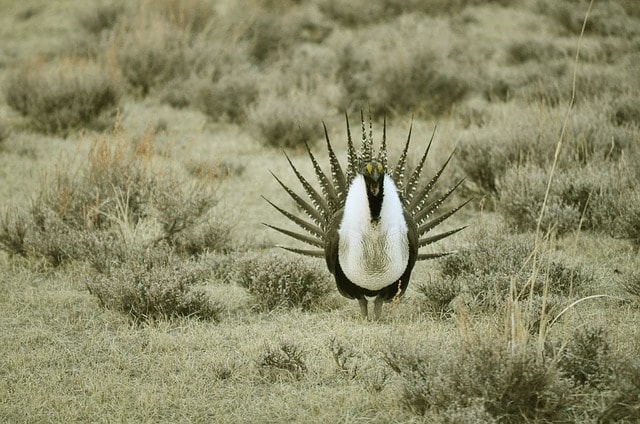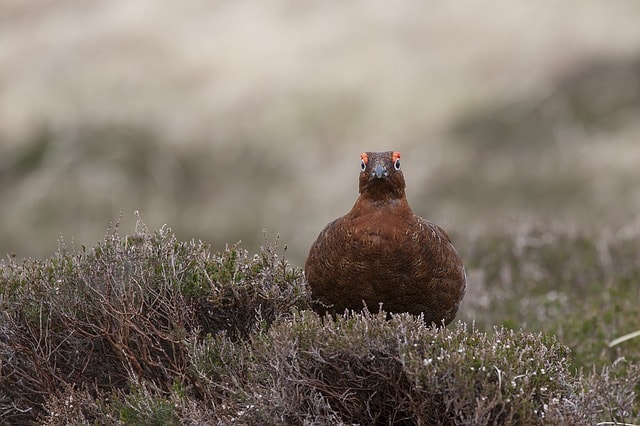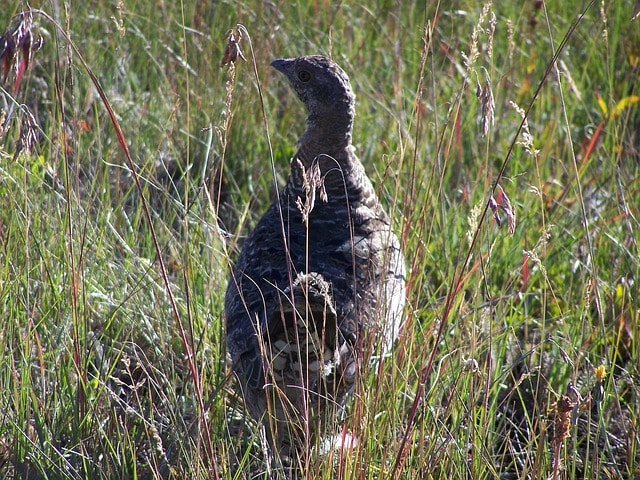Sage Grouse are medium to large game bird with a plump body and feathered legs. The sage grouse was alone species before another species Gunnison sage-grouse was discovered in 2000. The greater sage grouse is the largest grouse found in North America. The greater sage grouse do not have a crop that is why they can not digest hard seeds.

GREATER SAGE GROUSE HABITAT
Greater sage grouse habitat is spread across several types of sagebrush habitat of sagebrush growing in the steppe of western North America. Sage grouse love treeless landscapes with sagebrush, native bunchgrasses, wildflowers, and wet meadows for foraging. Sage grouse make their nest in big, dense sagebrush. For the lek, they use broad ridgetops, grassy swales, dry lakebeds, and sometimes recently burned areas.
With time the habitat of sage grouse has shrunk to only 56% of the total it was before in the US. This is caused due to the introduction of exotic grasses, croplands, and human developments.
Now with the due concern of conservationists, the habitat of sage grouse is being protected by the government in some parts.
GREATER SAGE GROUSE LEK
These birds show a unique way of a mating ritual called lekking. In a lek, males gather showing their best feather performance and inflate the gular sac showing to the females. Females who are present surrounding the males choose the alpha male and mates with him. The alpha male succeeds in mating with 80% of the females and rests male mates with other females.
After mating, they select the place for nesting. Nesting is usually is done in nearby areas where more grass is present. In Sage Grouse the abandoned rate of the nests is very high. Many predators like foxes usually kill the chicks before they become capable of flying.
FEMALE GREATER SAGE GROUSE

Females are generally bigger in size and they are chubby. The head is small and tail fairly long with a large black belly patch.
Sage grouse exhibit lekking during mating season. The male displays and females choose their partner for mating. Females build their nest on the ground with grasses.
GREATER SAGE GROUSE IN WYOMING
Wyoming has the largest concentration of greater sage grouse. Because of the development and farmland, the ecosystem is being disturbed. The habitat of sage grouse is shrinking each year.
SAGE GROUSE HUNTING IN NORTH AMERICA

With more number of sage grouse hunting, the population of this bird is declining. Some hunt for the meat and also a few hunt as games.
[su_youtube url=”https://www.youtube.com/watch?v=HyxGsrVhU0Q”]
Read Other Posts:
10 INTERESTING FACTS ON HORSE CONCH
BEST BIRD IDENTIFICATION APPS
BIRDS THAT START WITH K AND HAVE 10 LETTERS
GUNNISON SAGE GROUSE
It is one of the species of the Grouse group of birds which belongs to family Phasianidae. Found in southwestern Colorado to extreme southeastern Utah. Colorado is the state where the population of Gunnison grouse sage is the most.
During Spring season male shows lekking, the females observe the male performance choose the best one. The lekking is done usually in an open area near to a bush forest.
Due to continuous hunting and habitat loss, the number of Gunnison Sage Grouse declined and is now recognized as threaded species.
GUNNISON SAGE GROUSE VS GREATER SAGE GROUSE
Gunnison sage grouse are found in the Northern part of the American states whereas Greater sage grouse are found in the Southern part of the states. The major difference between them is Gunnison sage grouse is only two-thirds of the size of Greater sage grouse.
Both show lekking during the breeding seasons, but there are some differences in the pattern and behaviors during lekking. Gunnison sage grouse shows a fewer mating display in a minute and pop air sacs more times(about 9 times) during the display. Greater Sage grouse shows mating display more in a minute but pop air sacs less than Gunnison sage grouse.
Gunnison sage grouse wags tail at the end of the display and Greater sage grouse does not tail at the end of the display.
One more remarkable difference is the banding patterns on tail feathers. Gunnison sage grouse presents distinct banding patterns on tail features whereas Greater sage grouse doesn’t.
Ankurman Handique
Latest posts by Ankurman Handique (see all)
- How to Reach Kaziranga National Park: A Complete Guide - June 29, 2024
- What animals are found in Puerto Rico? - February 23, 2024
- What does coyote poop look like? - February 20, 2024
